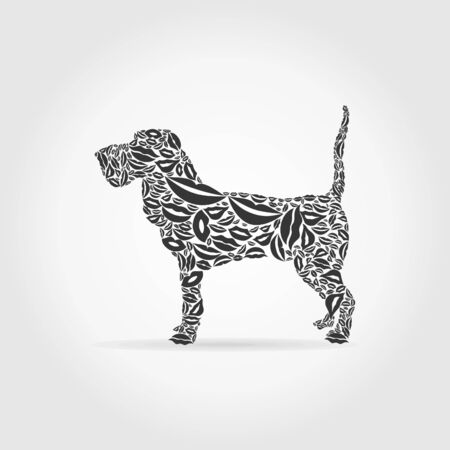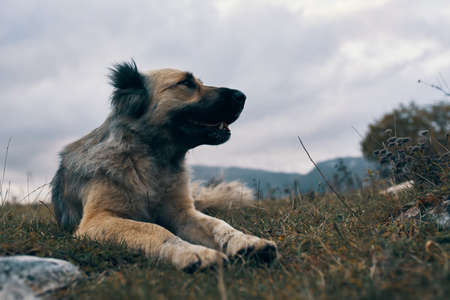1. Understanding the Importance of Geographic Origins
When designing a habitat for an exotic pet, one of the most crucial factors to consider is its geographic origin. The native environment of an animal plays a significant role in shaping its physical adaptations, behaviors, and overall well-being. By replicating these conditions as closely as possible, pet owners can help ensure their exotic pets thrive in captivity.
How Native Environments Shape Exotic Pets
Every species has evolved to survive in specific environmental conditions. These factors include temperature, humidity, terrain, vegetation, and available food sources. When an exotic pet is removed from its natural habitat, it may struggle to adapt if these elements are not properly recreated.
Key Environmental Factors to Consider
| Environmental Factor | Impact on Exotic Pet |
|---|---|
| Temperature | Affects metabolism, digestion, and activity levels. |
| Humidity | Essential for hydration, skin health, and respiratory function. |
| Terrain & Substrate | Influences movement, burrowing behavior, and foot health. |
| Vegetation & Shelter | Provides hiding spots and mimics natural hunting or foraging environments. |
| Diet & Nutrition | Ensures proper growth, energy levels, and immune system support. |
The Link Between Environment and Behavior
The native environment of an exotic pet also influences its instincts and behaviors. For instance:
- Tropical reptiles require high humidity to maintain healthy skin and shedding cycles.
- Desert-dwelling animals may be more active during cooler hours due to natural heat adaptations.
- Forest-dwelling species often need dense foliage or structures to feel secure.
- Aquatic pets rely on water quality that mimics their native rivers or lakes.
Why Geographic Origins Matter for Long-Term Health
If an exotic pets habitat does not align with its geographic origins, it can lead to stress-related illnesses, poor appetite, decreased activity, or even shortened lifespan. Understanding where your pet comes from helps create a supportive environment that promotes both physical health and psychological well-being.
Practical Steps for Pet Owners
- Research the specific climate conditions of your pet’s native region.
- Invest in appropriate heating, lighting, and humidity control devices.
- Select substrate and enclosure materials that resemble the pet’s natural habitat.
- Mimic seasonal changes when necessary to support breeding cycles or hibernation behaviors.
- Provide enrichment activities that align with natural instincts such as climbing, burrowing, or swimming.
By understanding the importance of geographic origins in exotic pet care, owners can create a habitat that fosters a happy and healthy life for their unique companions.
2. Climate Considerations in Habitat Design
When designing a habitat for an exotic pet, understanding the climate of its geographic origin is crucial. Temperature, humidity, and seasonal changes all play a role in ensuring your pet thrives in an environment that closely mimics its natural home.
Temperature Requirements
Different exotic pets require specific temperature ranges to stay healthy. Reptiles, for instance, are ectothermic, meaning they rely on external temperatures to regulate their body heat. Birds from tropical regions need warmth year-round, while small mammals may require a balance between warm and cool areas.
| Pet Type | Ideal Temperature Range (°F) | Special Considerations |
|---|---|---|
| Tropical Reptiles (e.g., Iguanas) | 80-95°F | Basking spots should reach 100°F |
| Desert Lizards (e.g., Bearded Dragons) | 75-100°F | A gradient from warm to cooler areas is essential |
| Tropical Birds (e.g., Parrots) | 70-85°F | Avoid cold drafts and sudden temperature drops |
| Aquatic Turtles | 75-85°F (water) | Basking area should be around 90°F |
| Tropical Mammals (e.g., Sugar Gliders) | 75-90°F | Avoid extreme temperature fluctuations |
Humidity Levels
The humidity level of your pet’s enclosure should match its natural environment. Too much or too little moisture can lead to health issues such as respiratory infections or dehydration.
| Pet Type | Ideal Humidity Range (%) | Maintenance Tips |
|---|---|---|
| Tropical Reptiles (e.g., Chameleons) | 60-80% | Mist enclosure multiple times daily; use live plants |
| Tropical Amphibians (e.g., Dart Frogs) | 70-100% | Mist frequently; provide a water feature or mossy substrate |
| Semi-Arid Reptiles (e.g., Leopard Geckos) | 30-40% | Avoid excessive misting; provide a humid hide box for shedding |
| Tropical Birds (e.g., Macaws) | 50-70% | Add a humidifier if air is too dry; offer regular baths |
| Mammals (e.g., Hedgehogs) | 40-60% | Avoid overly damp conditions; ensure proper ventilation |
Seasonal Adjustments
The seasons can impact your pet’s well-being, especially if they come from regions with significant climate variations. Some species experience brumation (a hibernation-like state) during colder months, while others may become more active during breeding seasons.
Coping with Seasonal Changes:
- If your pet requires warmth year-round: Use heat lamps, ceramic heaters, or under-tank heating pads.
- If your pet experiences seasonal shedding: Increase humidity levels during molting periods.
- If your pet naturally slows down in winter: Mimic shorter daylight hours and slightly lower temperatures if necessary.
- If summer temperatures rise too high: Provide shaded areas, cooling pads, or adjust air circulation.
Avoiding Climate Stressors:
- Sudden temperature drops: Keep enclosures away from windows, AC vents, or drafty areas.
- Dramatic humidity shifts: Use hygrometers to monitor levels and make gradual adjustments.
- Lack of seasonal cues: For some species, maintaining consistent environmental changes helps regulate natural behaviors like breeding or shedding.
The key to creating a thriving habitat is to replicate the climate conditions as closely as possible. By maintaining proper temperature, humidity, and seasonal adjustments, you help ensure your exotic pet remains happy and healthy in its new home.

3. Flora and Fauna: Mimicking the Natural Ecosystem
When designing a habitat for an exotic pet, its essential to replicate the natural ecosystem as closely as possible. This includes selecting native plants, appropriate substrate, and creating microhabitats that support the pets natural behaviors. By doing so, you can provide a sustainable and enriching enclosure that promotes both physical and mental well-being.
The Role of Native Plants
Incorporating native plants into your exotic pet’s enclosure helps recreate the environment they are accustomed to in the wild. These plants provide shelter, humidity control, and even food sources for some species. Choosing the right vegetation ensures that your pet feels secure while also maintaining proper air quality and moisture levels.
Benefits of Using Native Plants:
- Provide natural hiding spots and climbing structures
- Help maintain humidity levels
- Create a visually appealing and naturalistic enclosure
- Reduce stress by mimicking the pet’s original habitat
Selecting the Right Substrate
The substrate is the foundation of any enclosure and plays a crucial role in maintaining a healthy environment. Different exotic pets require different substrates based on their geographic origins.
| Pet Type | Native Habitat | Recommended Substrate |
|---|---|---|
| Tropical Reptiles (e.g., Tree Frogs) | Rainforest | Coconut fiber, sphagnum moss, bark chips |
| Desert Lizards (e.g., Bearded Dragons) | Arid Desert | Sand mix, clay-based soil, reptile carpet |
| Aquatic Amphibians (e.g., Axolotls) | Freshwater Lakes | Fine sand or smooth river rocks |
| Forest-Dwelling Mammals (e.g., Sugar Gliders) | Dense Woodlands | Bark mulch, shredded leaves, soft bedding |
Creating Microhabitats for Comfort and Stimulation
A well-designed enclosure should include various microhabitats that allow your exotic pet to engage in natural behaviors such as burrowing, climbing, basking, or hiding. These areas help reduce stress and encourage activity.
Examples of Microhabitats:
- Basking Areas: For reptiles like turtles or lizards that need heat regulation.
- Hiding Spots: Small caves or dense plant cover for shy or nocturnal animals.
- Climbing Structures: Branches and vines for arboreal species such as chameleons or sugar gliders.
- Damp Zones: Mossy or water-rich sections for amphibians that require high humidity.
Final Thoughts on Ecosystem Design
Mimicking your exotic pets natural ecosystem is not only beneficial for their health but also creates a more immersive experience for you as an owner. By carefully selecting native plants, suitable substrates, and diverse microhabitats, you can ensure your pet thrives in an environment that closely resembles their geographical origins.
4. Behavioral and Social Needs Based on Origin
Understanding the natural behaviors and social dynamics of exotic pets is essential when designing their habitat. A species geographic origin influences its activity levels, interactions with other animals, and overall daily routines. By replicating these environmental factors, pet owners can ensure their exotic pets thrive in captivity.
How Geography Shapes Behavior
Different regions present unique challenges that have shaped the behavior of various species over time. For example:
- Rainforest Species: Animals from dense jungles tend to be highly active, often climbing or hiding due to predator presence.
- Desert Species: Many desert dwellers are nocturnal, avoiding the scorching daytime heat and becoming active during cooler nights.
- Arctic Species: Cold-climate animals may have slower metabolisms and require more insulated habitats to mimic their natural environment.
Social Dynamics of Exotic Pets
The way an exotic pet interacts with others is also influenced by its native habitat. Some species are highly social, while others prefer solitude. Understanding this helps prevent stress-related issues.
| Habitat Type | Typical Social Behavior | Example Species |
|---|---|---|
| Tropical Rainforest | Highly social; often live in groups | Marmosets, Parrots |
| Desert | Solitary or small family groups | Leopard Geckos, Fennec Foxes |
| Grasslands/Savannas | Live in herds or packs for protection | Meerkats, Prairie Dogs |
| Arctic/Tundra | Seasonally social; may form groups for warmth | Arctic Foxes, Snowy Owls |
Activity Levels and Habitat Design
The level of activity an exotic pet exhibits should guide how their living space is structured. Active climbers need vertical space, burrowing species need deep substrate, and nocturnal animals benefit from dim lighting during the day.
Examples of Activity-Based Habitat Needs:
- Burmese Pythons (Tropical Forests): Require both climbing structures and ground space to mimic their semi-arboreal nature.
- Pygmy Hedgehogs (Savanna/Grasslands): Prefer enclosed hiding areas for security but also need room to roam at night.
- Sugar Gliders (Australian Forests): Thrive in enclosures with plenty of branches and elevated platforms for gliding.
Ensuring a Balanced Environment
A pet’s behavioral and social needs should always be considered when designing an enclosure. Providing opportunities for natural movement, interaction (if applicable), and rest will help maintain both physical health and mental well-being. Whether a pet is a solitary desert dweller or a highly social rainforest creature, tailoring their habitat based on their origin ensures a happier and healthier life.
5. Overcoming Challenges in Exotic Pet Habitat Replication
Designing an exotic pet habitat that closely mimics its natural environment can be challenging. Space limitations, resource availability, and maintaining the right climate conditions are some of the most common obstacles. However, with creativity and strategic planning, these challenges can be addressed effectively.
Space Limitations and Creative Solutions
Many exotic pets come from vast natural habitats, making it difficult to provide adequate space in a home setting. Here are some ways to maximize available space while still meeting your pet’s needs:
| Challenge | Solution |
|---|---|
| Limited floor space | Use vertical space with climbing structures, shelves, or multi-level enclosures. |
| Small enclosure constraints | Create an outdoor play area or use expandable modular enclosures. |
| Lack of environmental variety | Add different textures, hiding spots, and perches to simulate a diverse habitat. |
Resource Availability and Substitutes
Certain materials, plants, or food sources found in an exotic pets native habitat may not be readily available in all locations. Finding suitable alternatives is essential to maintaining a healthy environment.
- Bedding and Substrate: If native soil types are unavailable, consider using coconut fiber, moss, or sand-based substrates that mimic the natural terrain.
- Live Plants: Some plants may not thrive outside their native region. Research non-toxic alternatives that provide similar shelter and humidity control.
- Dietary Needs: Some exotic pets rely on specialized diets. If certain food items are hard to find locally, look for freeze-dried or commercially formulated options that provide similar nutrients.
Maintaining Proper Climate Conditions
Exotic pets often require specific temperature and humidity levels to stay healthy. Investing in the right equipment can make a significant difference:
Temperature Control
- Use heat lamps, under-tank heaters, or ceramic heat emitters for reptiles and amphibians.
- Create warm and cool zones within the enclosure to allow for natural thermoregulation.
- Avoid direct exposure to air conditioning vents or drafty areas.
Humidity Management
- Mist enclosures regularly or use automated misting systems for species that require high humidity.
- Add water features such as small pools or humid hides to help retain moisture.
- Select enclosure materials that maintain proper airflow without excessive moisture loss.
The Importance of Observation and Adjustments
No two exotic pets will have identical needs, even within the same species. Regularly observing their behavior and adjusting their habitat accordingly is key to ensuring their well-being. Watch for signs of stress, improper shedding (for reptiles), or irregular eating habits as indicators that modifications may be needed.


